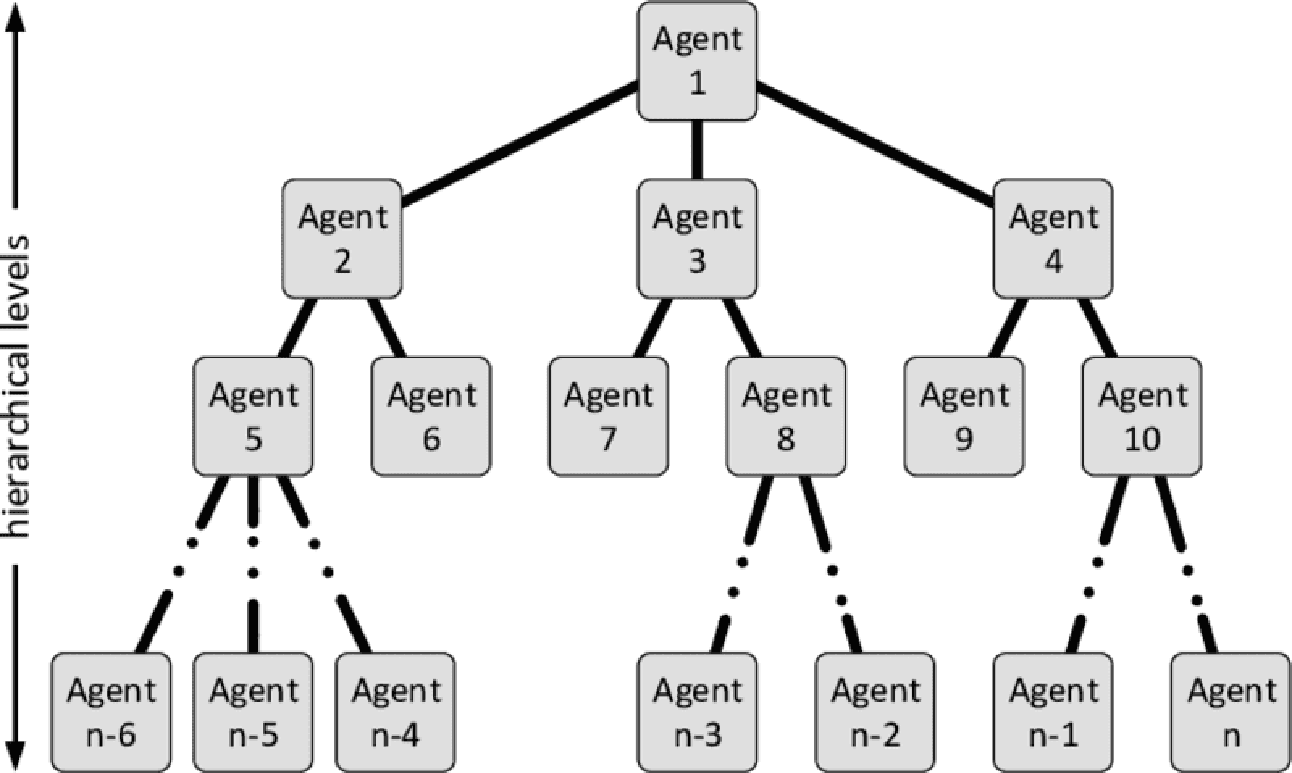Introduction: Rethinking AI Collaboration
As artificial intelligence continues to evolve, the focus has shifted from individual smart agents to collaborative intelligence systems that mirror human-like teamwork. The frontier of innovation is no longer about what a single AI can achieve, but how a network of AI agents can work together toward complex goals. Two groundbreaking developments leading this transformation are ZBrain’s multi-agent systems and its centralized Center of Intelligence.
To better understand these innovations, explore how ZBrain multi-agent systems work and the role of the Center of Intelligence in managing and coordinating them.
What Are Multi-Agent Systems?
A multi-agent system (MAS) consists of multiple intelligent agents—each with a unique role—that interact within an environment to achieve objectives. These agents can communicate, learn, negotiate, and make decisions autonomously or semi-autonomously. This setup mimics human collaborative teams, where individuals contribute specialized knowledge and perspectives toward a common goal.
The significance of MAS lies in their scalability, resilience, and adaptability. Unlike monolithic AI models, multi-agent systems can dynamically reconfigure their strategies based on context, interruptions, or evolving data sets. This decentralized design allows for real-time problem-solving across distributed systems.
ZBrain’s Approach to Multi-Agent Intelligence
What makes ZBrain’s implementation of MAS unique is its ability to coordinate complex agent interactions using a modular, composable architecture. Each agent is designed to handle specific tasks—data retrieval, language processing, decision support, and more—while collaborating seamlessly with other agents in the network.
The system leverages:
- Role-specific intelligence agents for focused task execution
- Shared memory and context to reduce redundant computation
- Self-correction mechanisms that allow agents to adjust and learn from feedback
Such architecture is designed not just for automation, but for intelligent collaboration. This sets ZBrain apart from traditional AI orchestration platforms.
The Role of the Center of Intelligence
Central to the ZBrain ecosystem is its Center of Intelligence—a supervisory layer that manages agent interactions, optimizes performance, and ensures security and compliance. This component acts as a cognitive command center, analyzing the workflow, assessing real-time data, and directing agents accordingly.
In practical terms, the Center of Intelligence performs the following:
- Resource Allocation: Dynamically distributes tasks based on agent capabilities and availability
- Conflict Resolution: Detects and resolves discrepancies between agents
- System Optimization: Analyzes performance data to improve throughput and reduce latency
- Ethical Oversight: Monitors for bias, privacy concerns, and security breaches
This orchestration layer transforms a network of individual agents into a coherent, intelligent ecosystem, capable of managing highly variable and complex tasks.
Real-World Applications of ZBrain’s MAS
ZBrain’s multi-agent framework is designed to be industry-agnostic but has shown particularly transformative results in the following sectors:
Healthcare
In medical diagnostics and patient care, different agents can handle symptom analysis, patient history retrieval, research correlation, and treatment recommendation. Coordinated through a central system, they provide personalized and accurate care faster than traditional methods.
Finance
Financial institutions use MAS to detect fraud, manage risk portfolios, automate reporting, and provide personalized investment advice. ZBrain’s intelligent orchestration ensures agents interpret and react to market fluctuations in near-real time.
Legal & Compliance
Law firms and compliance officers benefit from MAS through accelerated document analysis, regulatory cross-checking, and predictive litigation strategies. This helps professionals handle more cases with higher accuracy and less manual effort.
Customer Support
Agents dedicated to sentiment analysis, inquiry resolution, escalation management, and customer feedback work together to provide a human-like and adaptive customer service experience.
Benefits of Multi-Agent Intelligence Systems
The shift toward intelligent agent networks is driven by several clear benefits:
- Speed: Tasks are divided among agents, reducing bottlenecks and improving response time.
- Scalability: Systems can grow horizontally by adding new agents without redesigning the entire architecture.
- Accuracy: Multiple agents working collaboratively can double-check and validate each other’s outputs.
- Resilience: If one agent fails, others can take over, ensuring system continuity.
These advantages make MAS not just a technological trend but a strategic advantage for organizations navigating complex and data-rich environments.
Challenges in Multi-Agent Coordination
Despite the promise of MAS, implementation isn’t without challenges:
- Communication Overhead: Poorly designed systems can experience delays due to excessive inter-agent messaging.
- Security Risks: More agents mean more points of vulnerability, making cybersecurity essential.
- Ethical Concerns: Bias in one agent can propagate if not properly checked at the orchestration level.
- Debugging Complexity: Tracing errors in a distributed, intelligent system can be significantly more difficult than in traditional applications.
ZBrain addresses these issues through its Center of Intelligence, which actively mitigates risks by enforcing governance policies, validating agent behavior, and using real-time analytics to guide operations.
The Road Ahead: Autonomous Organizations
As AI continues to evolve, ZBrain’s MAS architecture is laying the groundwork for autonomous organizations—entire business units run by coordinated agents with minimal human oversight. These units could manage supply chains, customer relations, finance, and logistics with consistent efficiency.
The long-term vision includes:
- Self-managing departments that execute based on KPIs and strategic goals
- AI-driven strategy engines that simulate market scenarios and recommend actions
- Integrated human-AI feedback loops for continuous learning and alignment with business objectives
In this future, human leaders act more as strategic orchestrators than micro-managers, focusing on creativity and ethics while agents handle execution and optimization.
Conclusion: From Intelligence to Wisdom
The integration of ZBrain’s multi-agent systems with its centralized orchestration via the Center of Intelligence represents a monumental step in the evolution of AI. This approach doesn’t just increase computational capability—it amplifies collective intelligence.
By enabling machines to work together in a coordinated, ethical, and adaptive manner, we are not just creating smarter tools—we are building digital ecosystems that learn, adapt, and collaborate. Whether applied to business, healthcare, or governance, these intelligent systems hold the potential to reshape how we solve problems, deliver services, and even understand intelligence itself.
READ ALSO: Why Choose Raw Accel for Mouse Optimization on Windows 10?
